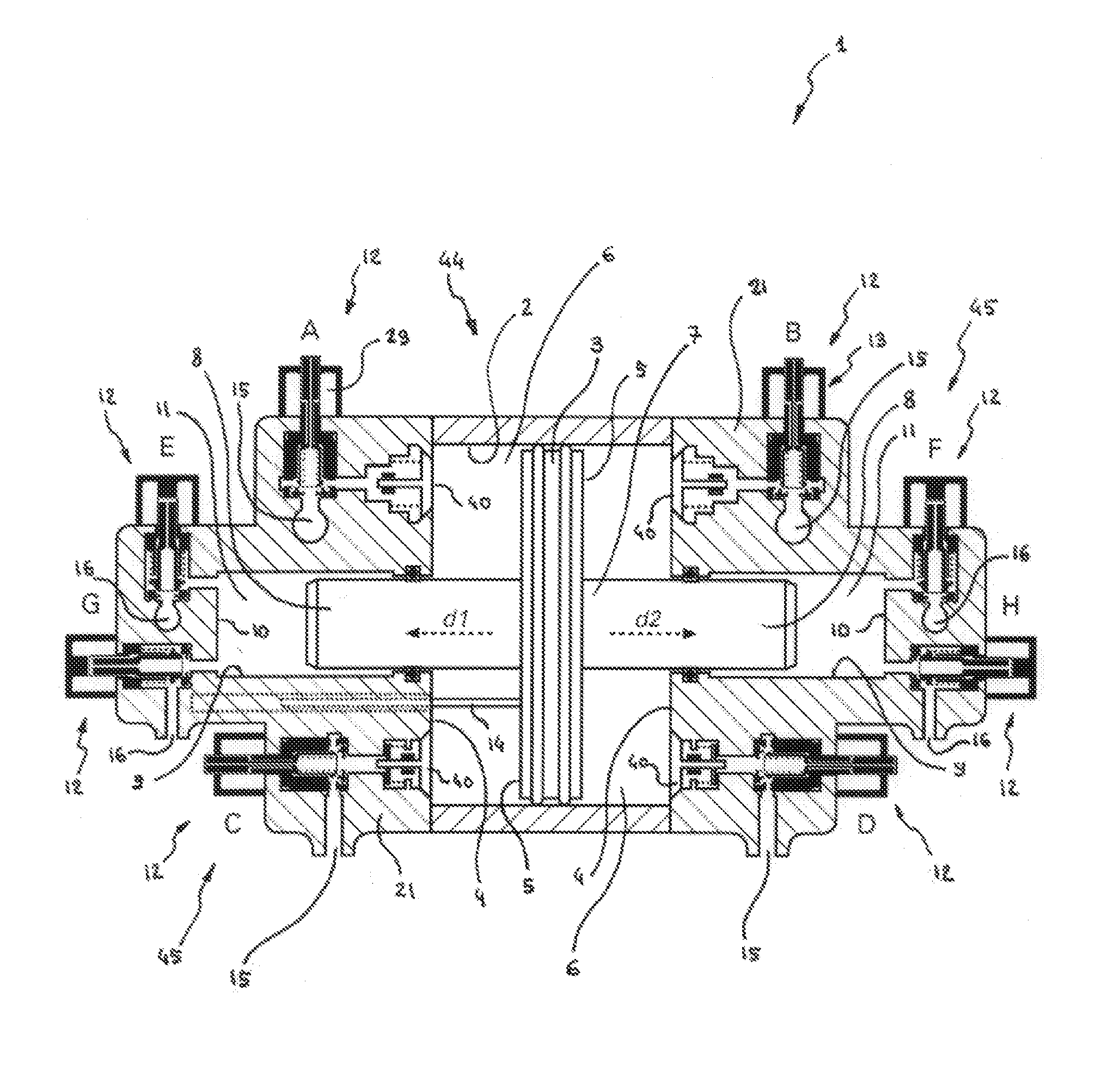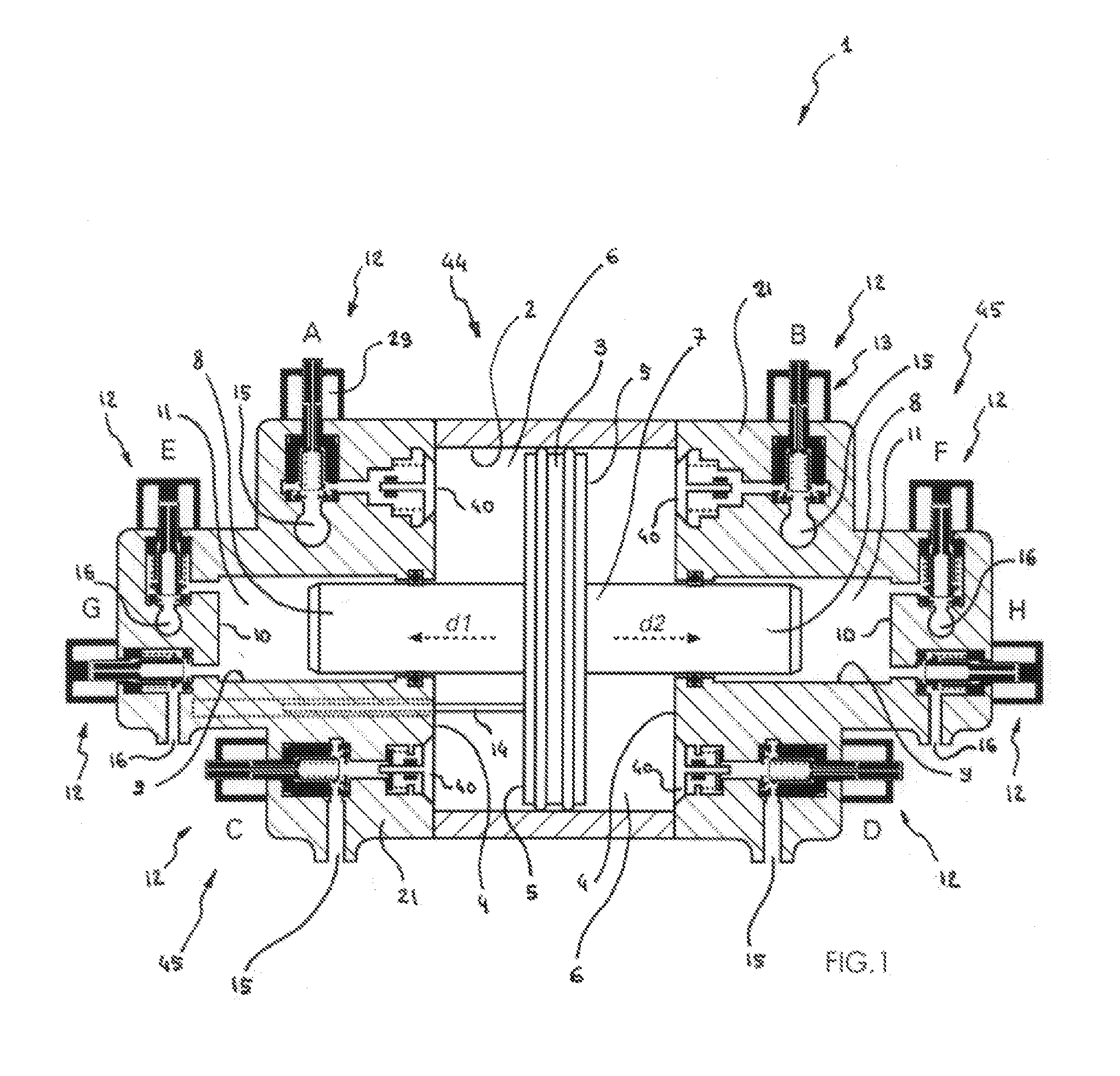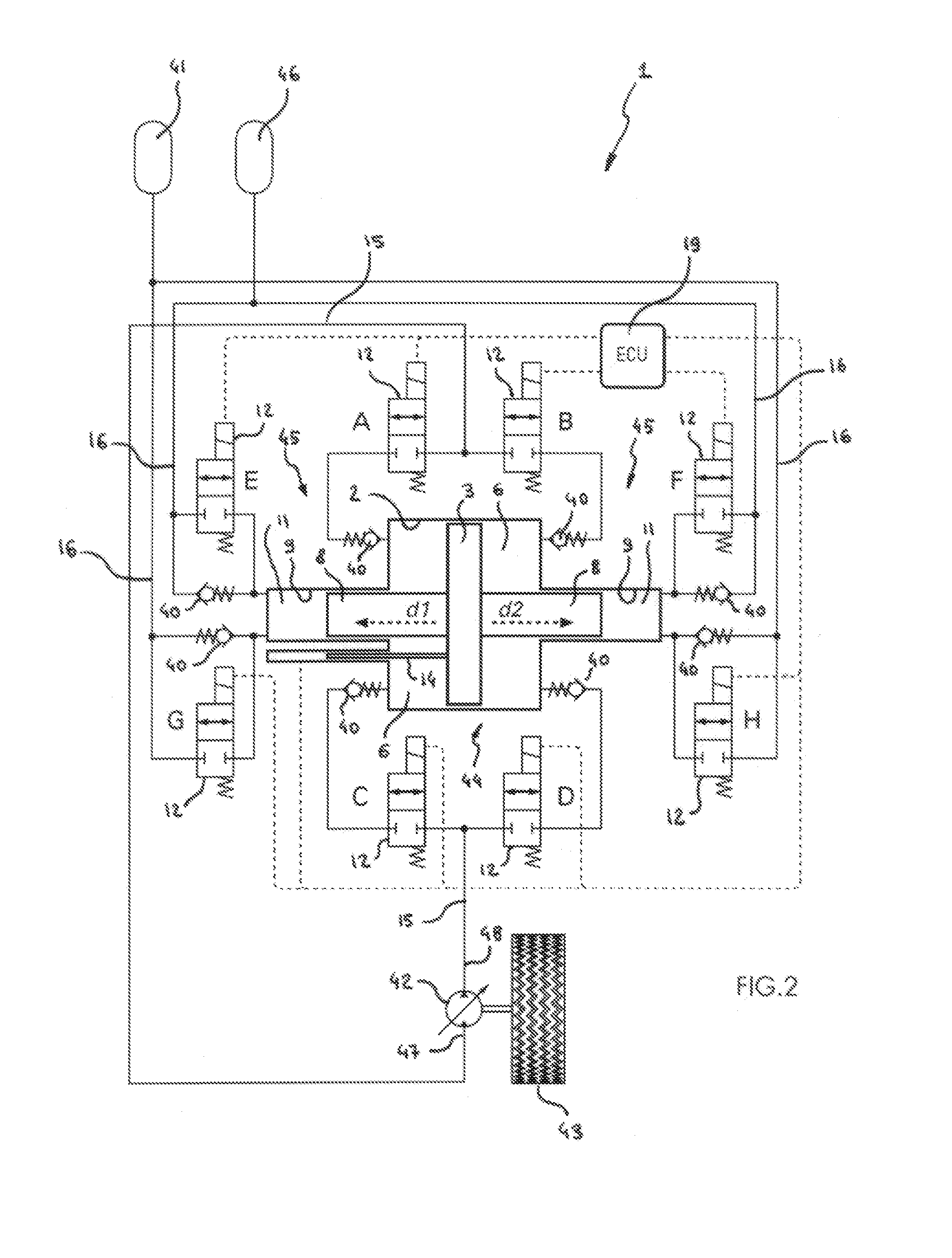Reversible hydraulic pressure converter employing tubular valves
a hydraulic pressure converter and tubular valve technology, which is applied in the direction of propulsive elements, high-tension/heavy-dress switches, vessel construction, etc., can solve the problems of inability to recover all of the compression energy of hydraulic fluid, the pump/motor is optimized, and the pressure of the hydraulic flow is technologically more difficult to reduce. , to achieve the effect of high operational pressure, excellent efficiency and optimized pump/motor efficiency
- Summary
- Abstract
- Description
- Claims
- Application Information
AI Technical Summary
Benefits of technology
Problems solved by technology
Method used
Image
Examples
Embodiment Construction
[0067]The reversible hydraulic pressure converter 1 employing tubular valves is shown in FIGS. 1 to 8.
[0068]It is seen—particularly in FIG. 1—that the reversible hydraulic pressure converter 1 in accordance with the invention employing tubular valves includes a medium-pressure stage 44 consisting of a medium-pressure cylinder 2 each of the two ends of which is closed by a medium-pressure head 4 and in which can move in translation in a fluid-tight manner a double-acting medium-pressure piston 3 that has a pressure face 5 facing each medium-pressure head 4 while said cylinder 2, said heads 4 and said pressure faces 5 form two medium-pressure chambers 4 positioned axially on respective opposite sides of the double-acting medium-pressure piston 3.
[0069]Note that the double-acting medium-pressure piston 3 may be provided with at least one ring or at least one seal of any type known to the person skilled in the art. The pressure converter 1 in accordance with the invention further includ...
PUM
 Login to View More
Login to View More Abstract
Description
Claims
Application Information
 Login to View More
Login to View More - R&D
- Intellectual Property
- Life Sciences
- Materials
- Tech Scout
- Unparalleled Data Quality
- Higher Quality Content
- 60% Fewer Hallucinations
Browse by: Latest US Patents, China's latest patents, Technical Efficacy Thesaurus, Application Domain, Technology Topic, Popular Technical Reports.
© 2025 PatSnap. All rights reserved.Legal|Privacy policy|Modern Slavery Act Transparency Statement|Sitemap|About US| Contact US: help@patsnap.com



